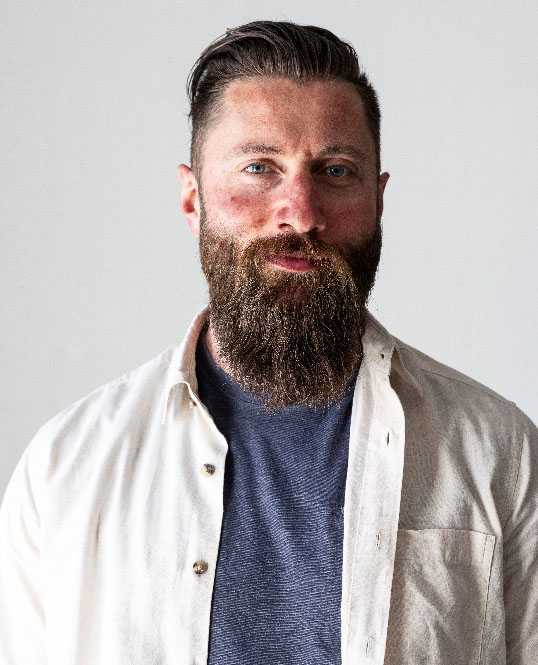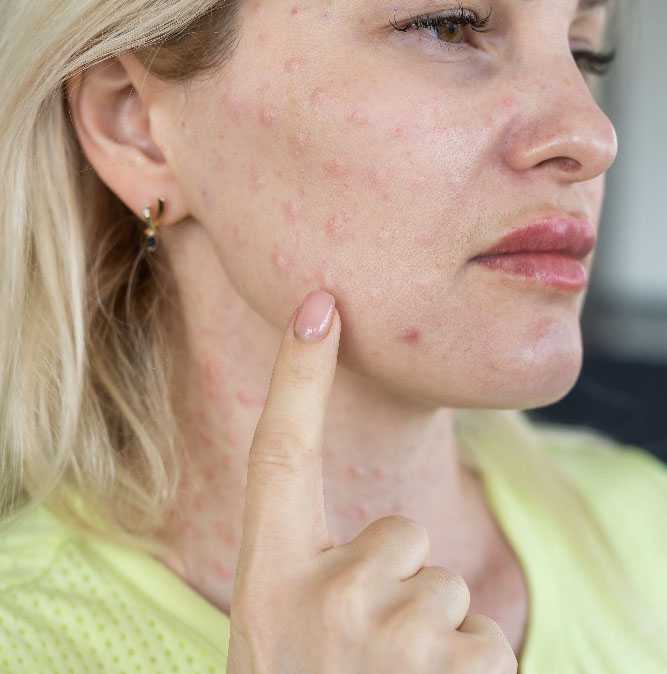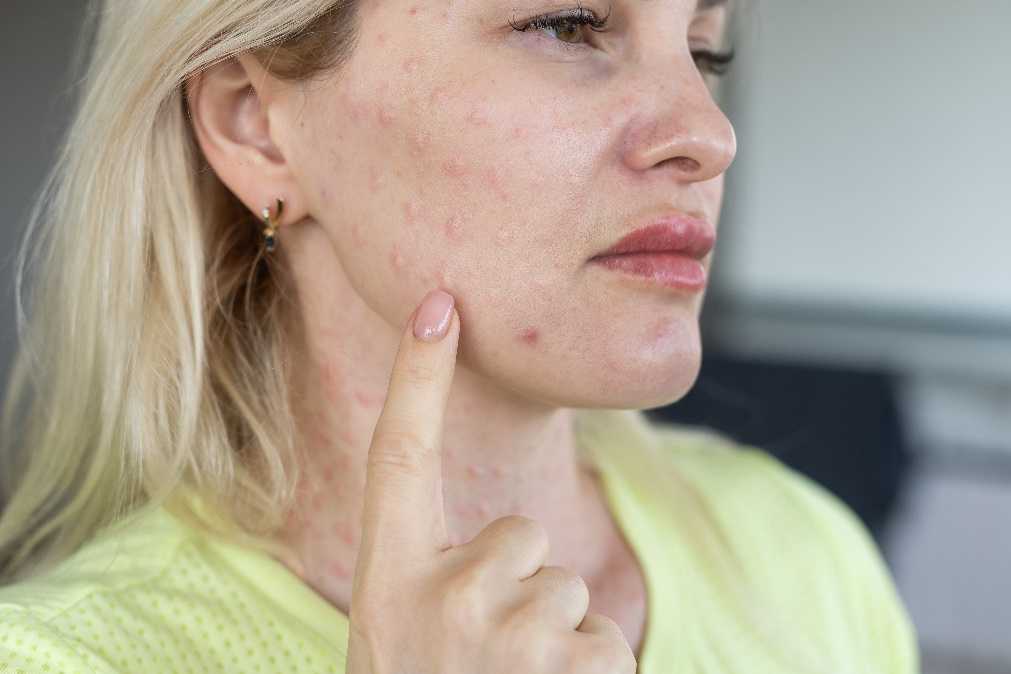Introduction
Acne, a common skin condition, knows no boundaries when it comes to age or gender. Traditionally associated with the turbulent years of adolescence, it can persist or even emerge for the first time in adulthood, particularly among individuals embarking on the path of Testosterone Replacement Therapy (TRT). TRT is a medically prescribed treatment designed to rectify testosterone deficiencies, a condition medically known as hypogonadism. While TRT offers a multitude of benefits in terms of ameliorating symptoms related to low testosterone, it simultaneously presents a challenge by potentially triggering or exacerbating acne. In this comprehensive guide, we embark on a journey to understand the intricate relationship between TRT and acne and delve into the plethora of strategies available for effectively managing acne during the course of testosterone replacement therapy.
Acne: A Complex Skin Condition
Acne, much more than a mere surface-level concern, is a complex dermatological condition rooted in the physiology of the skin. To comprehend how to manage it effectively, it’s crucial to grasp the fundamental aspects of acne:
- Hair Follicles and Sebaceous Glands: At the heart of acne’s development lie the hair follicles and sebaceous glands. These glands play a pivotal role in the production of sebum, an oily substance that not only lubricates the skin but also holds the potential to become a key player in acne’s genesis.
- Clogged Pores: The acne journey begins when hair follicles become obstructed, primarily due to the accumulation of sebum and dead skin cells. This creates an ideal environment for the proliferation of acne-causing bacteria.
- Inflammation: The arrival of bacteria in these clogged pores triggers an inflammatory response from the body. The consequence? Those characteristic red, swollen pimples we associate with acne.
- Types of Acne Lesions: It’s important to note that acne can manifest in various forms, including whiteheads, blackheads, papules, pustules, nodules, and cysts. Understanding these variations is crucial for addressing them effectively.
Understanding these fundamental principles of acne is essential to navigate its complexities, particularly when it intersects with the realm of TRT.
The Essence of Testosterone Replacement Therapy
Testosterone Replacement Therapy (TRT) stands as a medical intervention engineered to rectify low testosterone levels, a condition clinically referred to as hypogonadism. Hypogonadism, characterized by an insufficient production of testosterone, brings forth a myriad of symptoms, including fatigue, diminished libido, muscle atrophy, and mood disturbances. TRT, in its various forms, intervenes to restore hormonal balance and alleviate these debilitating symptoms.
- Diverse TRT Methods: TRT offers individuals a range of methods for testosterone administration. These include injections, gels, patches, and implants, each carrying its unique impact on the risk of acne development.
- Hormonal Alchemy: The introduction of exogenous testosterone into the body via TRT introduces an intricate alchemy of hormones. These hormonal shifts can, in turn, exert significant influences on the skin and contribute to the onset or exacerbation of acne.
Now that we have established the basic tenets of acne and the essence of TRT, it is essential to navigate the labyrinthine relationship between the two, which is characterized by complexity and nuances.
The Intricate Link Between TRT and Acne
The interplay between TRT and acne is far from simplistic; instead, it is marked by its intricacy and multifaceted nature. While TRT holds the promise of a better quality of life, it concurrently harbors the potential to induce or aggravate acne. This intricate relationship is governed by several key factors:
- Elevated Sebum Production: Testosterone, a vital player in TRT, possesses the power to stimulate the sebaceous glands to produce more sebum. This increase in sebum production is a double-edged sword. On one hand, it contributes to healthy skin by maintaining moisture and preventing excessive dryness. On the other hand, an excess of sebum can clog hair follicles, setting the stage for acne development.
- Hormonal Equilibrium in Flux: TRT’s introduction of testosterone into the body can disrupt the delicate hormonal balance. Hormonal fluctuations, especially when testosterone levels rise too rapidly, can have a profound impact on the skin.
In some cases, a surge in testosterone can lead to a phenomenon known as “steroid acne.” This type of acne, driven by hormonal imbalances, tends to be more severe and can affect not only the face but also the chest, back, and shoulders.
- Individual Variances: It’s crucial to recognize that the relationship between TRT and acne is highly individualized. Not everyone who undergoes TRT will experience acne, and even among those who do, the severity can vary significantly.
Numerous factors contribute to this individual variability, including genetic predispositions, pre-existing skin conditions, hormone levels prior to TRT, and the specific method and dosage of testosterone replacement. Therefore, the impact of TRT on acne is not one-size-fits-all but rather a complex interplay of individual characteristics and treatment variables.
Navigating Acne During TRT
Understanding the complex nature of acne and its intricate relationship with TRT is the first step in effectively managing this skin condition during testosterone replacement therapy. Armed with this knowledge, individuals can take proactive steps to minimize acne breakouts and maintain healthy skin. In the subsequent sections, we will delve into practical strategies for managing acne during TRT, including skincare routines, treatment options, and lifestyle modifications that can make a significant difference in acne management.
Acne: A Comprehensive Exploration
Acne, though often perceived as a superficial concern, is a complex dermatological condition with multifaceted origins.


To truly understand how to manage acne, one must delve into its intricacies, beginning with its root causes:
- Hair Follicles and Sebaceous Glands: At the heart of acne development lie the hair follicles and sebaceous glands. These glands, strategically located beneath the skin’s surface, are responsible for producing sebum, a natural oil designed to lubricate and moisturize the skin. However, under certain circumstances, this otherwise beneficial substance can become a catalyst for acne.
Sebaceous glands are found throughout the body, with the highest concentration on the face, chest, back, and neck. The face, in particular, is often a primary battleground for acne breakouts due to the dense network of hair follicles and sebaceous glands in this area.
- Clogged Pores: Acne’s journey commences when hair follicles become obstructed. This obstruction arises from a combination of factors, including the overproduction of sebum, the shedding of dead skin cells, and sometimes, external debris like makeup or environmental pollutants.
The obstruction typically occurs as follows:
- Excess sebum production: Hormonal fluctuations, stress, or genetic predispositions can trigger the sebaceous glands to produce more sebum than the skin requires. This excess sebum can become trapped in hair follicles.
- Accumulation of dead skin cells: Our skin is in a constant state of renewal, shedding old skin cells to make way for new ones. Sometimes, these dead cells don’t slough off as efficiently as they should, and they accumulate in the hair follicles.
- Bacterial presence: Acne-causing bacteria, most notably Propionibacterium acnes, thrive in the environment created by clogged hair follicles. As these bacteria multiply, they contribute to inflammation and the formation of acne lesions.
- Inflammation: Inflammation is a hallmark of acne. It is the body’s natural response to the presence of bacteria and other foreign invaders within clogged hair follicles. When bacteria multiply within these follicles, the immune system releases inflammatory signals, leading to the characteristic redness, swelling, and discomfort associated with acne lesions.
The severity of inflammation can vary, ranging from mild redness and a few small pimples to severe cystic acne, which is characterized by large, painful nodules deep within the skin.
- Types of Acne Lesions: Acne manifests in various forms, each with its distinct characteristics and implications. Understanding these different types of lesions is crucial for effective management:
- Whiteheads: Closed comedones that appear as small, white bumps on the skin’s surface. They occur when a hair follicle is completely blocked.
- Blackheads: Open comedones that appear as small, black dots on the skin’s surface. They result from partially blocked follicles where the sebum and dead skin cells are exposed to air, causing oxidation and a black appearance.
- Papules: Small, red, raised bumps that can be tender to the touch. They develop when inflammation occurs within the hair follicle.
- Pustules: Pimples with a white or yellow center, surrounded by red, inflamed skin. Pustules indicate a higher degree of inflammation and bacterial involvement.
- Nodules: Large, painful lumps deep within the skin. They are the result of extensive inflammation and are often resistant to over-the-counter treatments.
- Cysts: Deep, pus-filled lesions that can cause scarring. Cysts are among the most severe forms of acne and require professional treatment.
By gaining a deeper understanding of acne’s origins and the various types of lesions it can produce, individuals can better appreciate the complexity of this skin condition. This knowledge serves as a foundation for implementing effective management strategies, particularly when acne intersects with the realm of Testosterone Replacement Therapy (TRT).
The Intricate Link Between TRT and Acne
The relationship between TRT and acne is far from straightforward. While TRT offers numerous benefits for individuals with low testosterone levels, it can also introduce challenges in the form of acne. Understanding the intricacies of this link is crucial for effective management:
- Elevated Sebum Production: Testosterone, the central player in TRT, holds the power to stimulate the sebaceous glands to produce more sebum. This increase in sebum production is a double-edged sword. On one hand, it contributes to healthy skin by maintaining moisture and preventing excessive dryness. On the other hand, an excess of sebum can clog hair follicles, setting the stage for acne development.
- Hormonal Equilibrium in Flux: TRT’s introduction of testosterone into the body can disrupt the delicate hormonal balance. Hormonal fluctuations, especially when testosterone levels rise too rapidly, can have a profound impact on the skin.
In some cases, a surge in testosterone can lead to a phenomenon known as “steroid acne.” This type of acne, driven by hormonal imbalances, tends to be more severe and can affect not only the face but also the chest, back, and shoulders.
- Individual Variances: It’s crucial to recognize that the relationship between TRT and acne is highly individualized. Not everyone who undergoes TRT will experience acne, and even among those who do, the severity can vary significantly.
Numerous factors contribute to this individual variability, including genetic predispositions, pre-existing skin conditions, hormone levels prior to TRT, and the specific method and dosage of testosterone replacement. Therefore, the impact of TRT on acne is not one-size-fits-all but rather a complex interplay of individual characteristics and treatment variables.
Navigating Acne During TRT
Understanding the complex nature of acne and its intricate relationship with TRT is the first step in effectively managing this skin condition during testosterone replacement therapy. Armed with this knowledge, individuals can take proactive steps to minimize acne breakouts and maintain healthy skin. In the subsequent sections, we will delve into practical strategies for managing acne during TRT, including skincare routines, treatment options, and lifestyle modifications that can make a significant difference in acne management.
Acne Management Strategies During TRT
Managing acne during Testosterone Replacement Therapy (TRT) requires a multifaceted approach that addresses both the underlying hormonal imbalances and the visible symptoms of acne. Below, we outline a comprehensive strategy for effectively managing acne during TRT:
- Consult a Dermatologist: If acne becomes a concern during TRT, it is advisable to consult a dermatologist. Dermatologists are specialists in diagnosing and treating skin conditions, including acne. They can assess the severity of acne, identify any underlying factors contributing to it, and recommend appropriate treatments.
- Establish a Gentle Skincare Routine: A gentle skincare routine is crucial for individuals on TRT. This routine should aim to cleanse the skin without causing irritation or further aggravating acne. Here’s a recommended skincare regimen:
- Cleanser: Use a mild, non-comedogenic (won’t clog pores) cleanser twice daily to remove dirt, excess oil, and makeup. Avoid harsh or abrasive cleansers, as they can strip the skin of its natural oils, leading to increased sebum production.
- Moisturizer: Apply a suitable moisturizer to keep the skin hydrated. Contrary to popular belief, moisturizing is essential even for acne-prone skin. Look for oil-free, non-comedogenic moisturizers to avoid clogging pores.
- Sunscreen: Use a broad-spectrum sunscreen with an SPF of at least 30 daily, especially if you’re using acne medications. Some acne treatments can make the skin more sensitive to UV radiation. Opt for a sunscreen labeled “non-comedogenic” to prevent pore blockage.
- Consider Topical Treatments: Dermatologists may prescribe topical treatments to manage acne effectively. These treatments often contain active ingredients that target the factors contributing to acne development. Common topical treatments include:
- Benzoyl Peroxide: Benzoyl peroxide is effective in killing acne-causing bacteria and reducing inflammation. It is available over-the-counter or in prescription-strength formulations.
- Salicylic Acid: Salicylic acid helps exfoliate the skin, preventing the buildup of dead skin cells within hair follicles. This can help unclog pores and reduce acne.
- Retinoids: Topical retinoids, such as tretinoin and adapalene, help improve cell turnover and prevent the formation of acne lesions. They can be particularly effective for acne-prone skin.
- Topical Antibiotics: Dermatologists may prescribe topical antibiotics to reduce inflammation and control bacterial growth on the skin’s surface.
It’s essential to follow your dermatologist’s recommendations regarding the application of topical treatments, as misuse can lead to irritation and exacerbate acne.
- Explore Oral Medications: In more severe cases of acne during TRT, oral medications may be necessary. These medications are typically prescribed by a healthcare professional and include:
- Oral Antibiotics: Antibiotics, such as doxycycline or minocycline, can be effective in reducing inflammation and targeting acne-causing bacteria. They are typically used for a limited duration to avoid antibiotic resistance.
- Oral Contraceptives: For individuals who can use them, oral contraceptives with anti-androgenic properties can help regulate hormones and improve acne. This option is generally reserved for females.
- Isotretinoin (Accutane): Isotretinoin is a potent oral medication reserved for severe, treatment-resistant acne. It works by reducing sebum production and preventing the formation of acne lesions. However, it comes with potential side effects and requires careful monitoring by a healthcare provider.
- Hormone Management: Managing hormone levels is a critical aspect of addressing acne during TRT. Here are some considerations:
- Hormone Monitoring: Regularly monitor hormone levels, including testosterone, with the guidance of a healthcare provider. This can help ensure that TRT is adequately managing testosterone deficiency without causing excessive fluctuations that contribute to acne.
- Adjust TRT Protocol: If acne persists or worsens, work closely with your healthcare provider to adjust your TRT protocol. This may involve changing the type of testosterone administered, adjusting the dosage, or modifying the administration frequency to achieve a more stable hormonal balance.
- Combination Therapy: In some cases, healthcare providers may prescribe medications like spironolactone or finasteride to further manage hormonal factors contributing to acne. These medications can help reduce excessive androgens (male hormones) and their impact on the skin.
- Lifestyle Modifications: Certain lifestyle changes can complement medical treatments and promote healthier skin during TRT:
- Diet: Maintain a balanced diet rich in fruits, vegetables, and whole grains. Limit the consumption of dairy products and high-glycemic foods, which may exacerbate acne in some individuals.
- Hydration: Stay well-hydrated to support overall skin health. Proper hydration helps the skin maintain its natural barrier function.
- Stress Management: High stress levels can exacerbate acne. Engage in stress-reduction techniques such as mindfulness, yoga, or meditation.
- Regular Exercise: Regular physical activity can help reduce stress and promote healthy circulation, which is beneficial for the skin.
- Avoidance of Irritants: Avoid harsh or abrasive skincare products, as well as excessive scrubbing or picking at acne lesions, which can worsen inflammation and scarring.
- Patience and Persistence: Managing acne during TRT is often an ongoing process that requires patience and persistence. It may take time to find the right combination of treatments that work for your skin. Dermatologists and healthcare providers can provide guidance and support throughout this journey.
Conclusion
Managing acne during Testosterone Replacement Therapy (TRT) is a multifaceted endeavor that requires a comprehensive approach. By understanding the complex interplay between TRT and acne, individuals can take proactive steps to minimize breakouts and maintain healthy skin. Consulting with dermatologists and healthcare providers, establishing a gentle skincare routine, considering topical and oral treatments, managing hormone levels, making lifestyle modifications, and exercising patience are key components of an effective acne management strategy during TRT.
Remember that everyone’s skin is unique, and what works for one person may not work for another. It’s essential to work closely with healthcare professionals to tailor a personalized acne management plan that aligns with your specific needs and goals. With the right guidance and persistence, individuals can successfully navigate the challenges of acne during TRT, ultimately achieving clearer and healthier skin. For more information about hormone replacement therapy for men or testosterone replacement therapy clinics like HRT Doctors Group, be sure to contact us.
Questions and Answers
